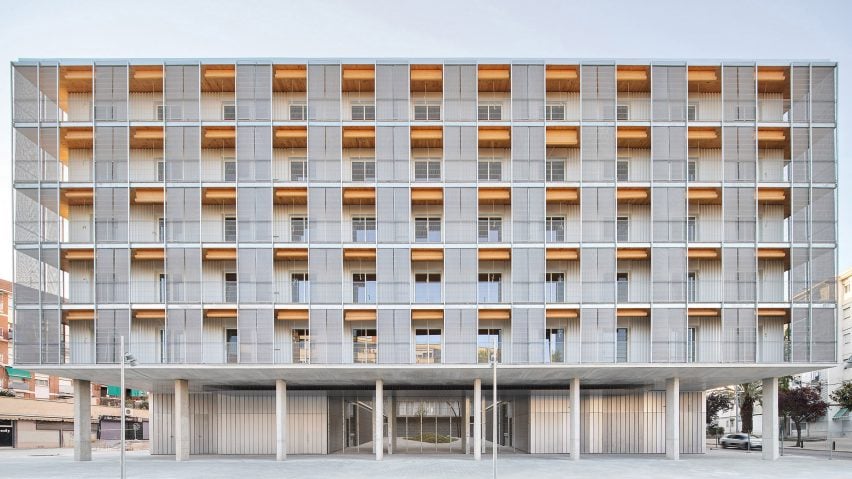
Barcelona's "best projects are being done in the field of social housing"
As part of our Social Housing Revival series, we spotlight the city of Barcelona, which is shrugging off the legacy of fascism by rapidly ramping up its supply of social housing.
In June 2015, veteran housing activist Ada Colau became the first female mayor of Barcelona. She had risen to prominence clashing with police as she protested a rise in evictions following the 2008 financial crisis.
Colau was elected on an ambitious manifesto that focused heavily on re-establishing housing as a basic right for citizens, rather than as an investment asset, in the Catalan city.
At the time, Barcelona had just 7,500 public-housing units – a hangover from four decades of Francisco Franco's fascist rule in Spain during the 20th century when private housing was prioritised.

Colau's 10-year Right to Housing Plan put forward stringent measures to double that to 15,000 by 2025. As of December 2023, there were over 12,300 social homes in the city.
"There may be people who disagree with our city model," Colau said in an interview with Spanish newspaper elDiario.es last year, shortly before her unsuccessful re-election bid.
"What no one disputes with us is that we did not come to warm the chair, but to implement a different, fairer, democratic and feminist city model," she said. "[In Spain] we are leaders in social investment and public housing."
Among Colau's measures were buying up private residential blocks and converting them to council homes, seizing vacant apartments and requiring developers to set aside 30 per cent of new apartment blocks over 600 square metres for social housing.
Despite being ousted as mayor last year by socialist Jaume Collboni, her time in the post helped kickstart serious efforts to finally upgrade the city's social housing sector.
In January 2024, Collboni signed an agreement requiring the Catalan Land Institute (INCASOL) to construct at least 1,700 social homes in five years on 27 plots of government-owned land.
Barcelona overlooked social housing "until the last decade"
The shift has been supported first-hand by Lacol – a local co-operative of architects prioritising social and environmental justice in its work.
"The problem of the lack of public housing in Barcelona is very serious," Lacol told Dezeen.
"Until the last decade, the problem has not been tackled with any ambition," a spokesperson for the collective said. "During the legislatures of Ada Colau, brave steps were taken and a lot of energy has been put into improving the public housing situation."
Lacol believes that much of the city's best architecture is now emerging from within this sector.
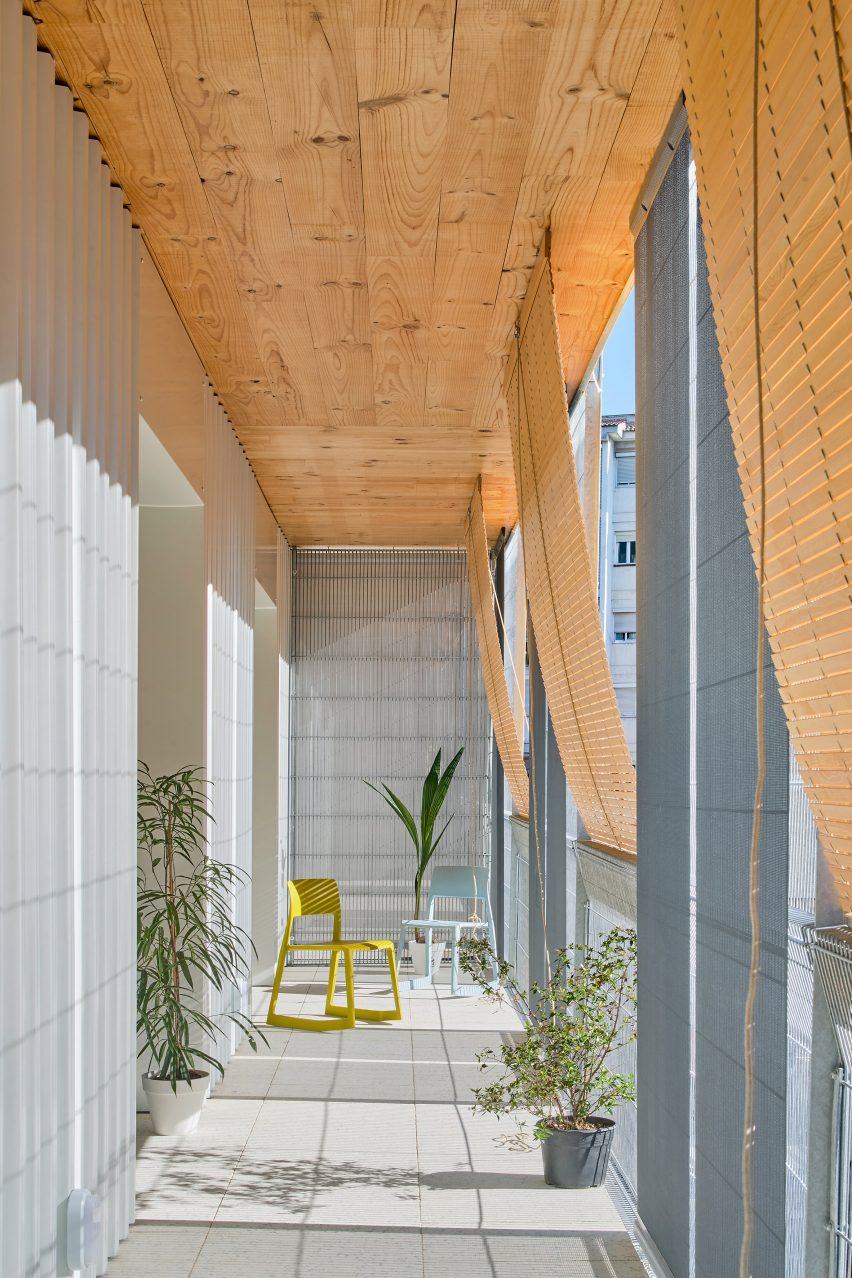
"Very exciting projects have been done in recent years," Lacol added.
"The architecture done in Catalonia has a very good standard. It is designed from the concern of offering a good experience to the user, and we think that precisely the best projects are being done in the field of social housing."
Among the most recent social housing projects in the city are 85 Social Dwellings in Cornellà by Peris +Toral Arquitectes (pictured top) and Social Housing 1737 by H Arquitectes.
Elsewhere, MIAS and Coll-Leclerc Architects have completed 72 Social Housing Units at The Marina Del Prat Vermell and Emiliano López Mónica Rivera Arquitectos created 0304SAN Social Housing for Young People.
Co-operative housing "has shown immense potential"
However, for Lacol, one of the most exciting forms of sub-market housing to become more prevalent is co-housing – otherwise known as housing co-operatives.
In Barcelona, co-housing typically occupies publicly owned land or abandoned sites, which the city council hands over to community land trusts.
The trusts then rent and sell the housing to tenants at discounted prices for long periods, running the building the building alongside them.
Lacol's members are among those helping to deliver this type of housing in Barcelona, with the group's most notable example being La Borda.
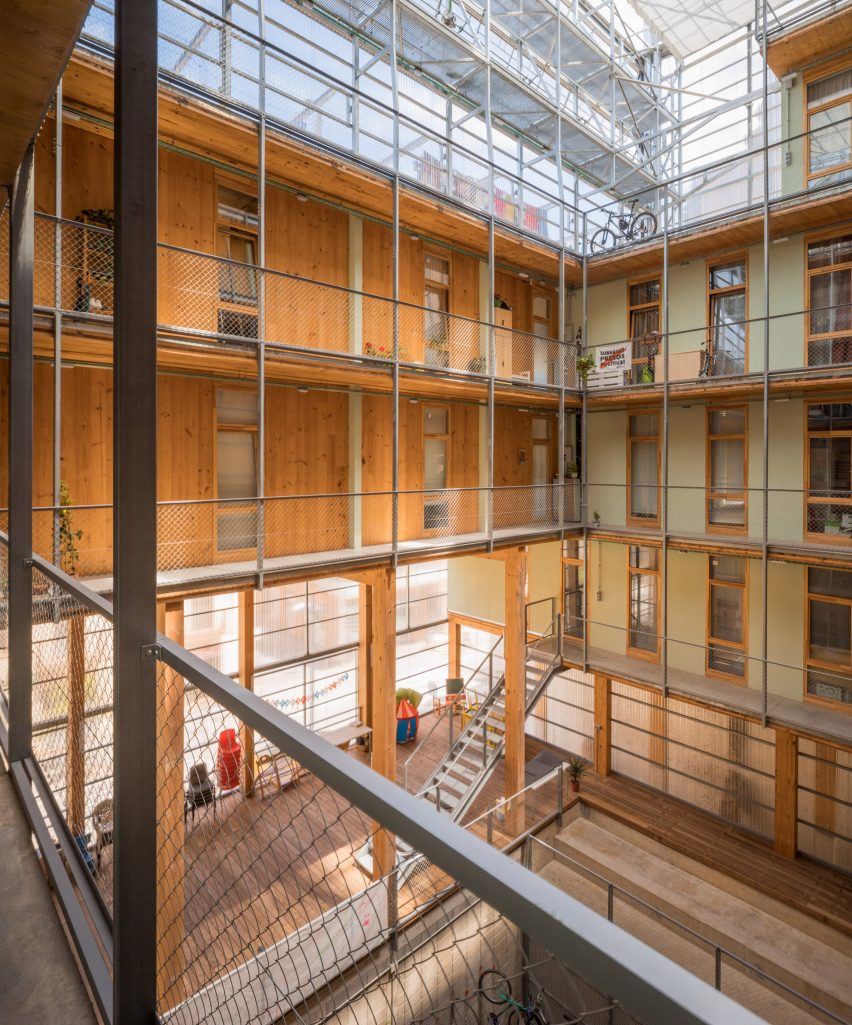
Completed in 2018, La Borda is one of the tallest cross-laminated timber buildings in Spain. It consists of 28 homes with shared living spaces arranged around a central courtyard, developed in collaboration with residents – a typical approach for the city's co-housing.
Following its success, Lacol developed the La Balma co-housing block, which contains 20 homes as well as a rooftop garden and ground-floor community spaces.
"These buildings have made it visible that it is possible to build more sustainably and that it is necessary to introduce more of a social angle in public housing," Lacol said.
Another studio currently exploring the Barcelona co-operative housing model is Peris+Toral Arquitectes, which is developing a project for senior citizens in the city.
"Barcelona's approach to social housing strikes me as particularly compelling," studio co-founder José Toral told Dezeen.
"The co-operative model, for example, has shown immense potential by fostering direct engagement with end-users, thus extending the reach and impact of projects," he continued.
"We are in the process of developing a co-operative housing project for seniors. The participatory process has enabled us to create a housing model that would otherwise have been impossible."
Before this scheme, Peris+Toral Arquitectes created the 85 Social Dwellings in Cornellà project on the site of a former cinema.
While providing important social housing for the city, the project also made waves by becoming Spain's largest timber-framed residential building.
Rise in environmentally conscious social homes
The use of timber is a common feature of several recent social housing projects in Barcelona, reflecting a desire to be environmentally responsible as well as socially responsible.
"For us, social housing must be exemplary," said Toral. "It should not only address a social emergency but also pave the way for new living and construction practices," he continued.
This approach has also seen several social housing developments in the city feature terraces and prioritise passive building design strategies to help connect residents to the outdoors while creating comfortable living environments within Spain's hot summers.
For example, Social Housing 1737 by H Arquitectes features rooms around a cloister-like central atrium, ensuring every habitable room has exposure to natural light and ventilation.
"This kind of experience is not only better in terms of environmental responsibility, it is also more extraordinary because it connects us with nature," said H Arquitectes co-founder Xavier Ros Majó.
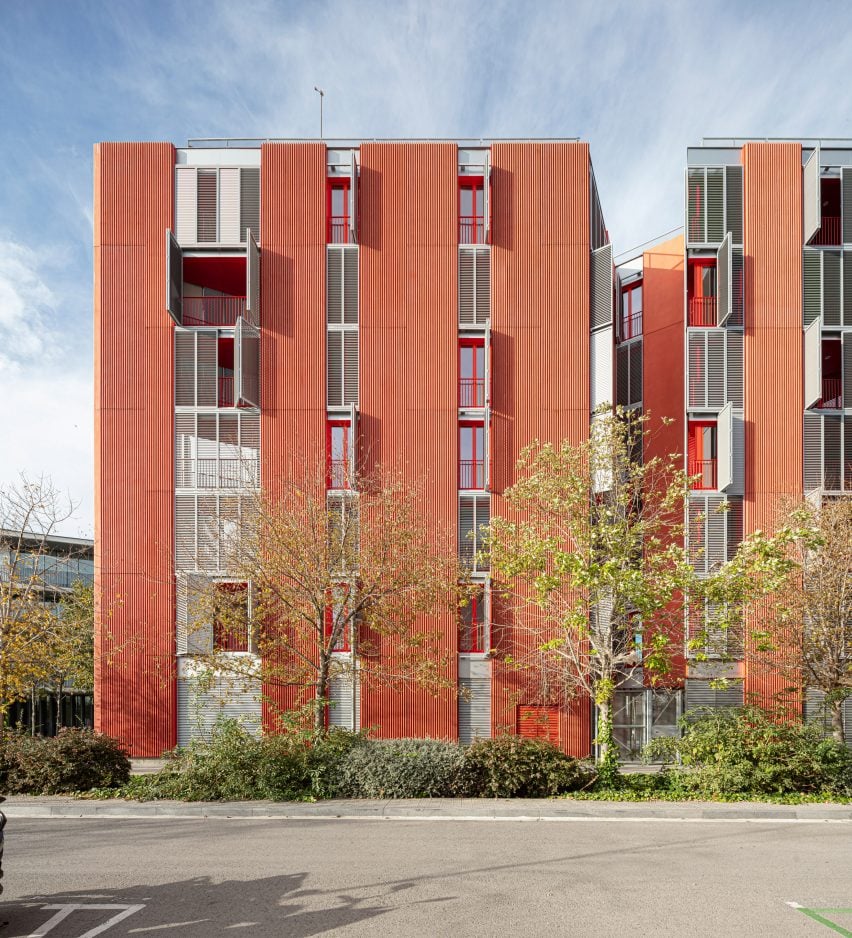
Elsewhere, the project 72 Social Housing Units at The Marina Del Prat Vermell is designed so that "all homes have at least one exterior terrace" according to MIAS founder Josep Miàs.
"The goal was to create homes with optimal living conditions, including ample direct light and sunlight, outdoor spaces as an extension of the living space," he said.
At La Borda and La Balma, Lacol used passive design measures as a way to minimise energy demand and, in turn, residents' energy bills.
"We wanted to create spaces that are energy-poverty shelters, which go beyond the energy savings set by the regulations and achieve comfort with the minimum possible consumption, which in the end translates into very important savings for the residents," the group explained.
"The solution lies in not considering only Barcelona city"
However, there is still a long way to go. Social homes now account for two per cent of Catalonia's total housing stock – well below the EU average of 15 per cent.
Meanwhile, debate continues over the best measures to alleviate housing-affordability issues.
For Lacol, the solution is for the local government to continue to prioritise the construction of new public housing and co-operative housing.
At the same time, the group is demanding measures in the private market such as more stringent rent control.
Yet for MIAS, the approach should be for the government to turn its focus on building more homes in the suburbs of Barcelona while establishing better transport links.
"The solution lies in not considering only Barcelona city but the metropolitan area, so it's not about only housing but good public transport," he explained.
"Then there will be no excuses for a lack of land, as people will be able to live in the metropolitan area within a reasonable distance and time."
The main image, of 85 Social Dwellings in Cornellà by Peris +Toral Arquitectes, is by José Hevia.
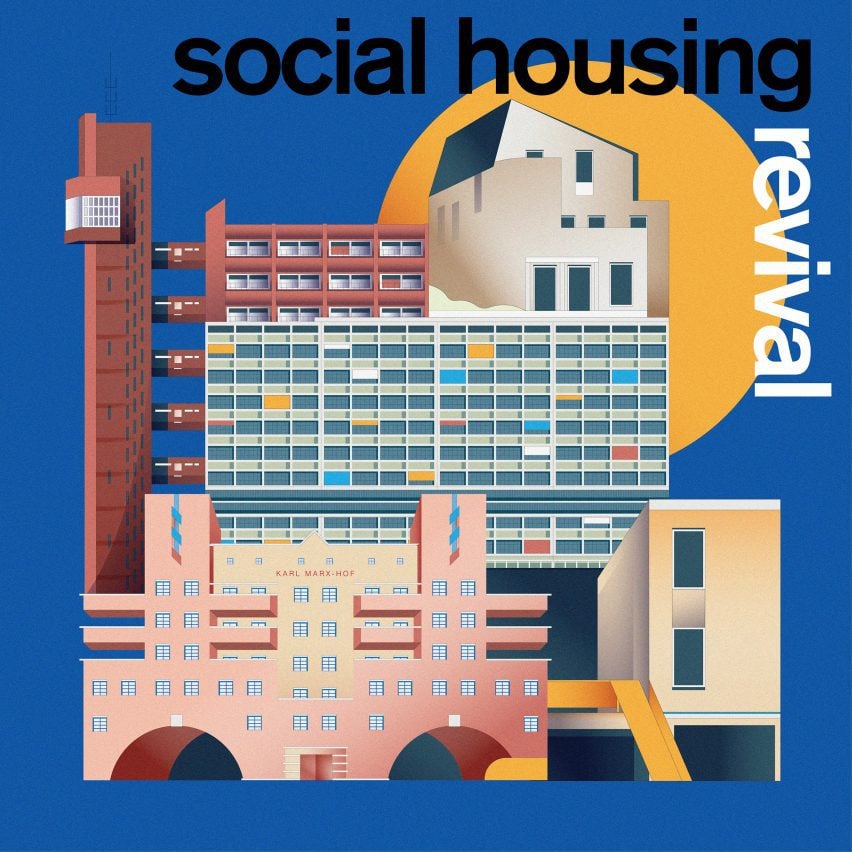
Social Housing Revival
This article is part of Dezeen's Social Housing Revival series exploring the new wave of quality social housing being built around the world, and asking whether a return to social house-building at scale can help solve affordability issues and homelessness in our major cities.